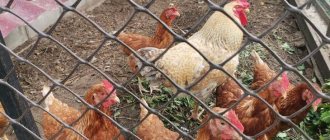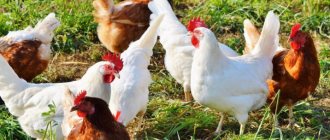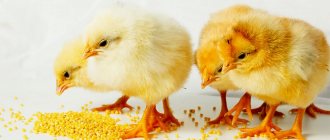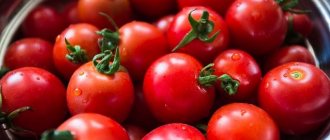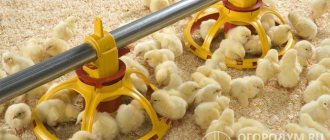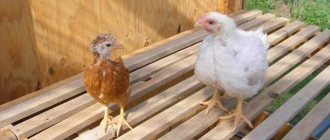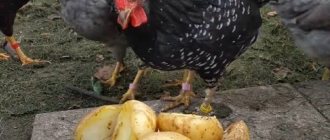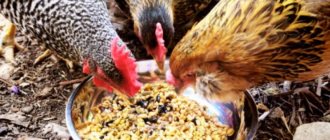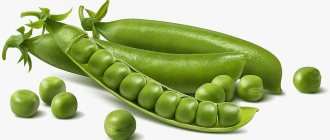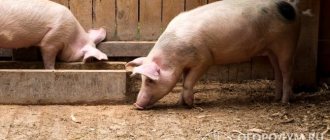2 423
no comments yet
1
Author:
Rasskazov Pavel.
Reading time: 2 minutes
Raw and boiled beets are suitable for food. Poultry farmers prefer to use boiled or steamed beets. Fresh vegetables can irritate the intestinal lining and cause diarrhea.
Despite heat treatment, the root vegetable retains its beneficial properties. Boiled beets have less laxative effect.
Recommendations for preparation:
- beets must be fresh;
- cook over high heat;
- drain the water immediately after cooking;
- Keep refrigerated;
- do not add salt and spices.
Is it possible to give chickens beets and carrots plus the benefits of cabbage ball
When harvest time comes, you can always find surplus root vegetables at bargain prices to diversify your chicken menu. What should a home poultry farmer buy or include in his plan for creating a chicken garden for the future?
A chicken garden is always a good idea, especially when it includes root vegetables like beets and carrots.
Beetroot is useful for chickens entirely - from tops to roots. You can give it both fresh and cooked, and you can also buy granulated beet pulp for future use.
Raw beets simply cut in half, they are extremely nutritious and have the ability to purify the blood. Don't panic if you see a change in the color of your chicken droppings after consuming beets.
Sugar beet pulp is one of the cheapest livestock feeds available in loose form or in granules. Although it can help save money, it must be remembered that supplements cannot serve as the only source of food for poultry.
Beet pulp is usually given in winter when egg production is lower. The pellets are mixed with water - one part water per part of the pellets, then left for about half an hour until the moisture is completely absorbed, separated, mixed with food and given immediately and at one time to avoid fermentation.
Carrots are another healthy and safe product for chickens.
Whole carrots should be chopped or grated; boiled carrots should be given in any form.
As an added bonus, the beta carotene in carrots will give the yolks a bright orange color. To prevent internal parasites, many poultry farmers give grated raw carrots along with pumpkin seeds or crushed fresh garlic. It is worth noting that onions are not recommended for chickens, as they contain a toxin that destroys red blood cells and in large quantities causes jaundice and anemia in chickens.
Potato tops and green peelings should definitely be excluded from the poultry diet due to the high content of corned beef.
If you give the chickens a little raw or boiled potatoes mixed with grain once, it won’t hurt, but then it’s better to choose the option with fresh potatoes - the minerals it contains are potassium, phosphorus, magnesium, sulfur, iron and zinc, as well as vitamin A groups , B, C, which are not present in grain.
In professional poultry farming, to reduce the cost of fattening, potato flour is used - up to 30% as a substitute for corn flour in both the diet of broilers and laying hens without any negative consequences.
Finally, pay attention to turnips and cabbage. These vegetables make a great cooking game for your chickens. Hanging round fruits on a string in a chicken coop will give you a lot of funny moments.
Cabbage is rich in vitamins K, C, B6, B1 and potassium. Turnips contain many valuable microelements and a full range of vitamins.
To create a twisting cabbage ball, you will need a large and strong cabbage, a drill, a rope and 20 minutes of time. Drill a hole in the cabbage, pass the rope and secure one end with a knot under the head of cabbage, and fasten the other on the beam - first lower so that the bird gets the taste, and then pull it up so that the chickens have to jump.
The cabbage ball has proven itself well as a way to distract chickens from fighting among themselves and as a psychotherapeutic remedy for pecking.
Source
Proper feed and grain so that domestic chickens eat well
When keeping and breeding birds on your own plot, you must clearly know the rules for caring for pets. One of the most important points is the rationed distribution of feed. Before feeding the chickens, you need to weigh the required amount.
Such activities will help you avoid obesity or malnutrition. If there is a deviation in one direction or the other, this will negatively affect the overall health of the chickens.
What to do if chickens do not lay eggs is indicated here.
Diet
Industrial poultry farms involved in breeding chickens have long adhered to an optimal nutrition system. It is what promotes rapid productivity. But what about the owner who is engaged in poultry farming at home?
As mentioned earlier, constant undernutrition or overeating has a negative impact on the condition of birds. If foods such as vegetables, grains, and herbs are constantly present in the diet, this will lead to rapid laying of eggs and weight gain. In order for chickens to lay eggs well, you should feed them based on the following menu:
- boiled potatoes – 100 g;
- grain – 120 g;
- cake – 7-8 g;
- wet mash – 25 g;
- bone meal – 2 g;
- chalk – 3 g;
- yeast – 1 g;
- salt – 0.5 g.
In the morning, give the birds a wet mash with the addition of bone meal, salt, boiled potatoes, and table scraps. For dinner, it is better to feed chickens whole grains with the addition of products that were not used in the morning. Moreover, a certain amount of grain must be steamed. Then it will be possible to increase metabolic processes and improve the functioning of the digestive system. Cereals should be given every day, alternating.
You can find out what nests for laying hens with an egg collector look like from this article.
Is it possible to give potatoes and raw cabbage?
Geese are fed boiled potatoes at home, and chickens are mixed with beets and raw cabbage. This is a very nutritious and healthy feed. Since these products are given in crushed form, it is necessary to combine them with bone meal to form a wet mash. Such food allows you to quickly satisfy your hunger and saturate the body with all the useful substances that are so necessary for the body to function properly.
Is it possible to feed corn?
Corn is one of the most concentrated feeds, which contains many carbohydrates, vitamins and minerals. They are necessary to maintain the health of the chicken and obtain the required number of eggs. Corn grains are the most nutritious. In addition, they have a yellow color, which affects the color of the yolks. But feeding corn in large quantities is not permissible. Otherwise, the chicken will quickly gain weight and simply become fat.
Such a chicken stops producing eggs. Nutrition should be rational and varied. Corn grains should be included in the general diet. It is best to give them at night. But do not give it raw, but boil or steam it. You can add chopped herbs, peelings and leftover root vegetables, vegetables. Domestic chickens will really like this dinner. She will receive all the necessary microelements, be satisfied and be able to fully rest until the morning.
Is it possible to feed oats?
Oats are one of the best feeds for chickens of all types, including the Jersey Giant breed. It contains a large amount of protein. But this grain has one drawback - its high fiber content. When digesting oats, a large amount of energy is expended, so it is necessary to include only 10% of oats in the feed.
We recommend that you read the description of the Brahma breed in this material.
The use of compound feed for feeding birds, is it possible to make it yourself?
If you have certain doubts about the quality of a particular product, then it is better to prepare it yourself.
To do this, you need to mix legumes, grains, cakes, ingredients of animal origin in the following proportions:
- 70% wheat;
- 10% oats;
- 10% barley;
- 5% shells, chalk, meat and bone and fish meal;
- 5% oil-containing crops and cake.
Maybe,
Is it possible to give chickens beets: red (table), sugar and fodder, their tops
I know that poultry should be given root vegetables as one of the feed ingredients. In this regard, the question arose whether or not it is possible to give chickens red beets, fodder and sugar, as well as their leaves?
Many vegetables are good for chickens; they are a source of vitamins and minerals, and fiber. And beets are no exception. It is a vegetable that is grown almost everywhere, making it a relatively cheap and readily available addition to standard chicken feed. At the same time, you can feed the bird not only root vegetables, both fresh and boiled, but also fodder beet tops, that is, the leaves of the plant. Washed and chopped greens are included in the wet feed mixture or added to silage.
Fresh tops are contraindicated for chickens due to their pronounced laxative effect.
When feeding red beets to chickens, it is important to adhere to the norm and monitor how the birds’ bodies react to it. This vegetable can cause eating disorders, diarrhea and, as a result, pecking and cannibalism. The fact is that the pigments of table beets color feces red and chickens, seeing the dirty feathers around the anus of their relatives, mistake the discharge for blood and begin to peck at such birds. That is why red beets should be given in moderation, and if chickens become upset, remove them from the diet for a while, or better yet, replace them with feed or sugar beets.
You can feed chickens with beets at any time of the year, not only from spring to autumn, but even in winter, if you prepare a combined silage from it and other suitable ingredients. In terms of nutritional value, it is equal to fresh greens and is an excellent source of simple carbohydrates, vitamins and organic acids. It can be prepared from various components. In the case of fodder beet, its share in the silage should be 35% (root crops and tops). The rest is carrots with leaves (50%) and hay dust from legumes (15%). After 1.5 months, silage can already be fed to poultry either separately (with the addition of chalk) or mixed with grain and bran. You can give fresh silage to chickens from 3 weeks of age, 5-7 g per day, at 2 months they can receive 15 g, and adult chickens - 40-50 g.
Sugar beets (a source of sucrose, iron and manganese) can be given raw, in crushed form, 15-20 g to one and a half month old chickens per day and 150 g to adult chickens. It can also be dried and added to feed instead of grain, replacing up to 20% of this feed component.
Source
Is it possible to give beet tops
Expert opinion
Novoselova Sofya Ivanovna
Farmer. 20 years of experience.
Ask a Question
Not only the root crop benefits, but also the tops. In the summer, chopped green tops are added to the birds' diet. It can be frozen and added to your bird's diet year-round.
It is better to use garden tops for feed - they do not contain chemicals.
Using greens will not only benefit chickens, but also save poultry farmers money.
Mushrooms as a nutritious additive to chicken feed - is it possible or not?
Read
Feeding chickens with barley: can it be given to broilers?
More details
How and when to give chickens greens and grass: feeding standards
Look
Is it possible to feed chickens beets?
At the beginning of their journey of raising chickens, many people wonder whether it is possible to feed laying hens beets: red, fodder and sugar? Different sources give different advice: some are for, some are against. Most often, the answer depends on the type of vegetable. If the beets are light and not red in color, they will even be beneficial for birds. With the help of beets, you save on feed, as well as quickly gain weight in chickens. If the beets are red, then feeding them is definitely not recommended.
The basis of the diet for laying hens is grain. Since the content of nutrients in grain is small, the menu for birds is supplemented with herbs and vegetables.
Beets contain carbohydrates, vitamins and microelements that are very beneficial for birds. Root vegetables are given both raw and boiled. Chickens quickly digest beets, and if you choose the right dosage, you can protect the birds from negative consequences.
Red beets for laying hens
Red beets are very beneficial for the human body, but not for chickens. Even with a high content of vitamins and nutrients, it will not be a good supplement for birds. Beets have a laxative effect, which will be bad for chickens and will also remove a lot of water from their body. The vegetable will color the stool and cloaca of chickens red.
Since a red or pinkish color will occur, other birds will consider the colored chickens to be sick. Egg pecking and even cannibalism in laying hens may begin. To prevent such consequences, it is better not to feed red beets to chickens.
Fodder beet for laying hens
Fodder beets are mixed with boiled potatoes or with combined feed. Birds love such root vegetables very much. Beets contain useful substances and vitamins, which have a positive effect on the productivity of birds. Chickens become more active and their immunity is strengthened.
Fodder beet for laying hens
Fodder beets are specially grown to feed laying hens during the winter.
Before serving, grate the beets and add to the mash. The dosage is as follows: 25-45 grams per chicken per day. In the summer, chopped green tops are added to the mash.
Sugar beet
Sugar beets contain a high content of vitamins, minerals, and easily digestible carbohydrates. With the help of root vegetables, chickens gain weight faster. Birds digest such beets faster and get more energy. You can add the vegetable to the chickens' diet, but only in boiled form. The dosage of beets for chickens is up to 10 grams per day. As chickens grow older, the rate of beet intake increases.
Sugar beets for laying hens
The dosage of beets for adult chickens is 30-45 grams per day. The vegetable also needs to be grated and then added to the wet mash.
Boiled beets
If you feed chickens only fresh vegetables, their intestines may suffer. If the intestines are damaged, laying hens are more likely to develop diarrhea. For this reason, chickens should be given boiled or steamed vegetables. The intake rate for beets is limited, and chickens should be fed only after they have cooled down.
Boiled beets are no less useful than raw ones. It also preserves useful substances and is given with grain and green food.
Features of feeding
Feeding chickens involves several important aspects. First of all, you need to take into account the breed - each species has some characteristics and prefers one food to another. You need to make up your diet depending on the season. Small farmers prefer to keep poultry in conditions close to home ones and prepare feed personally. On the scale of large-scale production with a large number of livestock, it is more profitable to buy special feed. However, many private owners who raise birds for themselves today use special feed. They are known to contain additives that increase egg production, but do not have a very good effect on the health of chickens. In this article we will look at healthy natural foods.
The benefits and harms of beets for laying hens
We know about the many beneficial qualities of red beets, but they still remain harmful for chickens. It is not recommended to give red beets to laying hens.
You can feed your chickens fodder beets throughout the year. It is rich in vitamins C, B1, B2, PP, amino acids and carbohydrates. If chickens suffer from vitamin deficiency, it’s autumn, molting has begun or cold weather has arrived, beets will be most useful. Root vegetables have a positive effect on the digestion of chickens; birds digest grain better and gain weight faster. Do not overdo it with the amount of beets you take. Bad consequences can happen if you give chickens more beets than normal - more than 45 grams per day.
We provide the birds with the necessary amount of water
The vital activity and vitality of the chickens’ body is simply impossible without a sufficient amount of water.
Water is another, almost the most important, component of the diet of any bird species.
Thus, the body of one individual consists of 70% water. If at least 25% of its interest is lost, then the bird may simply die. If within 2 days the hen does not have the opportunity to drink water, then she will immediately stop laying eggs, and if she continues in a pitiful state for another 5 or 8 days, she is guaranteed to die.
Therefore, birds need to be given water daily, just like the other foods listed above.
It is important that the water is not too warm, not too cold
Its optimal temperature is from +10 to +15ºС. How much water birds need will depend on the air temperature - the hotter it is, the more water they need. If at a temperature from +12 to +18 ºС one individual is able to drink approximately 250 milliliters, then when the thermometer increases above +35 ºС the same individual will need about 350 milliliters.
In winter, chickens love to peck snow, but in this way they do not compensate for all their need for water. And eating snow alone will certainly cause various diseases. Therefore, it is imperative to place drinkers with water in the poultry house: in insulated ones - in the evening, and in non-insulated ones - preferably in the morning and always slightly warmed up.
How to give beets to chickens
Sugar and fodder beets are introduced into the chicken menu carefully: 2 weeks after hatching. The vegetable is crushed and added to boiled potatoes or mixed feed. In the summer, you can give chickens green tops.
For the first time, you need to give chickens about 3 grams of chopped beets. As you get older, the norm increases. Adult chickens should be given no more than 45 grams of beets per day. If diarrhea begins, you need to stop giving beets for a short time. If this happens, it is better to give the chickens boiled beets, and the number of grams per day is reduced.
Source
Feed consumption standards
Overfeeding and underfeeding birds are equally harmful. Every chicken owner should know the feed consumption rates depending on the age of the bird. Feed standards for chickens and laying hens are in Table 7.
Talitsa 7
| Age, weeks | Daily feed intake, g | Total feed for the period, kg |
| 1-3 | 10-26 | 0,4 |
| 4-8 | 31-51 | 1,3 |
| 9-16 | 51-71 | 2,2 |
| 7-20 | 72-93 | 3,5 |
| 21-27 | 100-110 | 5,7 |
| 28-45 | 110-120 | 15 |
| 46-65 | 120 | 17 |
The above doses correspond to feeds designed for certain periods of life (PC-1, PC-2, PC-3). When making homemade feed, nutritional standards are established experimentally.
Broilers are fed successively with three types of feed:
- “Start” or PK-5 - it is given from the first day until 14-15 days or up to 30-31 days, depending on the chosen feeding system.
- “Growth” – given at 3-4 weeks of life.
- “Finish” – from one month of age until slaughter.
Feeding standards for broilers for a system in which only starting and finishing feed mixtures are used are in Table 8.
Table 8
| Feeding standards for one individual | PK-5-3 | PK-5-4 | PK-6-6 | PK-6-7 |
| age | ||||
| 0-5 | 6-18 | 19-37 | 38-42 | |
| daily, g | 15-21 | 25-89 | 93-158 | 160-169 |
| for the entire period, g | 100 | 760 | 2410 | 830 |
How and in what quantity to give beets to chickens
The root vegetable contains a large amount of vitamins and minerals that are necessary for the development of birds.
It is given in its pure form, mixed with feed or other root vegetables (carrots, potatoes, etc.). The vegetable is cut into small pieces or grated on a fine grater, which facilitates the digestion process for chickens.
Beets should be added to the birds’ diet gradually, observing the dosage. The daily consumption rate is from 30 to 50 g.
As for chickens, root vegetables are introduced into their diet on the 10th day of life. It is not recommended to give it in its pure form. For example, mix boiled beets with potatoes. This mixture promotes the growth and development of birds. The daily norm is no more than 10 g.
It is not recommended to feed birds red beets; it is better to choose a light-colored root vegetable.
Beets are one of those products that can cause both benefit and harm. There are a number of contraindications for excessive use of the product :
If symptoms appear, remove beets from the bird’s diet and observe its reaction. If there are signs of anger, the chickens are isolated from each other for a short time.
Sugar
Sugar beets are ideal for building muscle in birds as they are high in glucose . It also contains easily digestible carbohydrates. Thanks to them, birds get a lot of energy. Especially useful for chickens.
Before consumption, the root vegetable is crushed and mixed with food or other vegetables . It is preferable to boil it. Beets can be frozen and fed to chickens all winter. Adult birds are given 30-50 g of sugar beets per day, chickens - 10 g per day.
Stern
Experienced poultry farmers recommend feeding birds with fodder beets year-round. This species contains all the necessary vitamins (C, B1, B2, PP) and amino acids for the growth and development of birds. Improves appetite and promotes rapid digestion of feed .
Fodder beets can also be mixed with other vegetables, and chopped tops can be added in summer. This mixture will enrich the bird’s diet.
Give 40-50 g boiled. It is useful to feed chickens in winter, early spring and during molting.
General rules for complementary feeding
Once you start feeding birds, make it a habit. Regularly delight them with healthy treats. Birds quickly remember the place of feeding and get used to it . Don't forget: we are responsible for those we have tamed!
Important! The more varied you organize your menu, the more species of birds will be interested in your feeder.
From time to time, empty the feeder of leftover food. Rot and mold are fertile ground for the development of harmful microorganisms .
Can chickens be given beets?
The main food for laying hens is grain. True, grain feed does not contain all the nutrients necessary for chickens. That is why they try to supplement the diet of laying hens with various vegetables.
The composition of beets is rich in carbohydrates, vitamins and microelements that are beneficial for chickens. This root vegetable can be given raw or cooked. The vegetable is quickly digested by the stomach and, when choosing the right dosage, does not lead to negative consequences.
Red
This variety is considered an indispensable product on our table, but it is not advisable to give it to chickens. This vegetable contains a lot of vitamins and microelements, but they will not bring any benefit to laying hens. The red root vegetable is a laxative; its consumption can cause diarrhea and depression in chickens. In addition, this vegetable colors the poultry’s feces and cloaca red.
Quite healthy chickens may be mistaken by their relatives for sick ones, which will lead to pecking and cannibalism in the chicken coop. It is better not to provoke the bird and not to give it red root vegetables.
Stern
Fodder beets are mixed with boiled potatoes or mixed feed. Chickens eat this vegetable with pleasure. It enriches the poultry’s diet with useful substances and vitamins, egg production increases in laying hens, they become more active, and get sick less.
Fodder varieties are specially grown for winter feeding of laying hens.
Root vegetables are grated, then this food is poured into wet mash. The daily norm for one bird is 30-50 grams. In summer, chopped green tops can be added to grain feed.
Sugar
Sugar beets are rich not only in vitamins and minerals, but also in easily digestible carbohydrates. The use of this product leads to rapid weight gain. This food is quickly digested by the stomach and gives the bird a lot of energy. This product is especially valuable for feeding chickens. True, it is better to give the chicks boiled root vegetables. The daily norm is no more than 5-10 grams. With age, the amount of such food can be increased.
Adult chickens are given 30-50 grams of sugar beets per day. The root vegetable is ground on a grater and mixed with grain feed.
Boiled
Fresh vegetables can irritate the bird's intestines and cause diarrhea. It is better to feed chickens boiled or steamed product. True, it is added to the main food in strictly limited quantities, only after complete cooling.
Boiled root vegetables are as healthy as fresh ones. This product retains all nutrients and can be combined with grain and green feed.
True, the daily norm for one chicken is no more than 30-50 grams.
Properties of different types of root vegetables
Several types of beets are known. Is it possible to feed poultry sugar root vegetables and what type of beets is best to give to chickens? Let's talk about the benefits and harms of each.
- Red beetroot . When consumed in moderation, it has a positive effect on the digestive system and improves the general condition of the chicken. A large amount of root vegetables, on the contrary, will have a negative effect on the gastrointestinal tract and cause stomach and intestinal disorders. It is an excess of red beets that causes aggression in chickens: feces turn brown or red, and red is known to irritate birds. Intestinal dysfunction can lead to dehydration.
Sugar beet . A storehouse of carbohydrates. And again, savings - at a low cost of the root crop, it gives chickens a quick gain in body weight. It is better to feed it boiled - this will make the vegetable even more useful. But do not forget about the daily norm: no more than 50 grams.
Sugar beets are an excellent alternative to grain. By saving on food, you do not save on the animal’s health. Frequent consumption of this type of vegetable in large quantities increases the animal’s blood sugar level.
- Fodder type of root crop . Extremely useful in winter in conditions of hypovitaminosis. By grinding it, it can be given either separately or as part of mixed feed. For chickens, fodder beet is an irreplaceable source of microelements necessary for growth and development.
- Beet fruit and tops.
- Potato fruits and leaves.
- Carrot.
- Cereals.
- Legumes. Grind the mixture and boil it. This cocktail of vitamins will compensate for their absence in the cold season, when the chicken is deprived of the opportunity to actively move, be in the sun and eat other foods.
Good to mix:
Beets are not inferior in usefulness to potatoes, carrots, grains and green feeds. Sufficient consumption of vegetables improves the overall well-being of the animal :
- the chicken becomes active;
- eats with pleasure;
- gains healthy body weight.
If the bird has consumed more than the prescribed amount, unpleasant symptoms develop, which we will discuss in the next paragraph.
Benefits and harms of the product
Despite the beneficial properties of red beets, it is better not to feed laying hens this vegetable. A product of this color should not be present in the diet of herd animals.
It is recommended to feed laying hens year-round with fodder beets. This vegetable contains vitamins C, B1,2, PP, amino acids, and carbohydrates. It is useful to add it to the menu of birds during vitamin deficiency, in the fall, during molting, in winter, and in early spring. It has a beneficial effect on digestion, accelerates the digestion of feed, and helps increase body weight. True, it should be taken only in minimal quantities, that is, no more than 30-50 grams per day (for one adult laying hen).
The chicken should not overeat, otherwise it will develop diarrhea, which will subsequently lead to a depressed and lethargic state. In addition to feed, it is useful for chickens to be given sugar beets with a high carbohydrate content. With this product the bird will begin to recover faster.
Vegetables are given to chickens in strictly limited quantities. The correct dosage does not harm, but, on the contrary, improves the condition of the birds. Chickens become more active, eat better, and gain weight faster. Laying hens increase egg production.
Third place
Remember that how and what you feed the bird determines not only its health, but also the taste and quality of its eggs and meat, and the breeder is primarily interested in this. In addition to the listed chicken stop products, you should also avoid the following:
- Peel from orange or other citrus fruits;
- It is also better not to give black bread, unlike white bread;
- It is better to abstain from celandine or give it in small quantities; also do not give the bird ragweed;
- Too sweet or salty food waste is also not suitable for poultry feed, the fact is that the digestive systems of humans and chickens are very different, so they are not able to adequately, without consequences, perceive human food with pronounced taste qualities.
How to properly feed chickens with beets?
Fodder or sugar beets should be introduced into the diet of chickens gradually, starting from 10-15 days of life. This root vegetable is an important source of vitamins, minerals, and carbohydrates. It is ground on a grater and mixed with boiled potatoes or mixed feed. In summer, chickens are fed chopped green tops.
For the first feeding, chickens are given no more than 5 grams of crushed feed. Then the dosage is gradually increased. The daily norm for an adult laying hen is 30-50 grams. If a product causes severe diarrhea, it can be eliminated from the diet for a while. After 2 weeks, it is advisable to resume feeding this food. True, boiled root vegetables are suitable for laying hens that have an overly sensitive stomach, but it is better to reduce the consumption rate.
Feeding egg breed chicks
When raising laying hens, the main goal is to provide a reliable foundation for the development of the chicken and its high productivity. Feeding standards are significantly lower than for meat breeds. The basis of the diet is grains, greens, hard vegetables (carrots, beets, pumpkin).
It is useful for laying hens to yeast feed. To do this, add 2-2.5% yeast to the diet
It is important to provide laying hens with vitamins and calcium, as well as monitor their digestive system. Laying hens are recommended to add wood ash to their feed.
Starting from 0.5 g for 1-day-old chicks, the portion is increased to 2 g for adult birds.
Birds are kept in the wild, providing them with free range
It is very important not to overfeed the birds - this will lead to a decrease in productivity. Most often, the optimal feeding scheme is selected empirically.
An example of a daily ration for egg-laying chickens in grams in the table:
| Ingredients | Age of chicks in days | ||||||
| 1-4 | 5-9 | 10-19 | 20-29 | 30-39 | 40-49 | 50-61 | |
| Egg yolk | 2 | 2 | do not give | do not give | do not give | do not give | do not give |
| Low-fat cottage cheese | 1 | 1,5 | 2 | 3 | 3 | 4 | 5 |
| Milled corn, barley | 5 | 9 | 15 | 23 | 32 | 40 | 50 |
| Skim milk | 5 | 8 | 15 | 20 | 36 | 25 | 25 |
| Meal, cake | 11 | do not give | do not give | ||||
| Meat and bone meal or fish meal | do not give | do not give | 1 | 1,5 | 2,5 | 3,5 | 4 |
| Greenery | 1 | 4 | 8 | 11 | 14 | 15 | 20 |
| Potato | do not give | do not give | 5 | 11 | 20 | 32 | 40 |
| Mineral supplements | do not give | 0,5 | 0,7 | 1 | 2 | 2 | 2 |
| Salt | do not give | do not give | do not give | do not give | do not give | 0,1 | 0,2 |
Composition of mixed feed "Rost"
Suitable for feeding chickens from 14 to 30 days. Retail price ranges from 23-32 rubles. per kilogram.
Composition table:
| Ingredient | Content in feed, % |
| Wheat | 58,3 |
| Soybean meal | 12,4 |
| Full fat soy | 10 |
| Feed yeast | 3 |
| Sunflower oil | 3,7 |
| Meat and bone meal | 2,5 |
| Sunflower meal | 5 |
| Fish flour | 1 |
| Baking soda | 0,21 |
| Salt | 0,19 |
| Monocalcium phosphate | 1,28 |
| Toxisorb | 0,05 |
| Limestone flour | 0,85 |
| Starfak 110 | 0,014 |
| Premix | 1,5 |
Composition of feed PK-2
The compound feed is intended for feeding from 1 to 8 weeks, well suited for one-month-old laying chickens. Approximate cost 22-30 rubles. per kilogram.
Composition table:
| Ingredient | Contents in feed |
| Ground corn | 30,4% |
| Milled wheat | 43,7% |
| Sunflower cake | 8% |
| Soybean meal | 11,2% |
| Fish flour | 1,8% |
| Methionine | 0,2% |
| Lysine | 0,46% |
| Salt | 0,23% |
| Limestone | 1,6% |
| Monocalcium phosphate | 1,33% |
| Premix | 1% |
Are there any contraindications?
Fodder or sugar beets can be fed to chickens in strictly limited quantities. The daily requirement for crushed feed is only 30-50 grams per head. Exceeding the dosage can lead to diarrhea or depression in chickens. In this case, laying hens are stopped feeding these products. True, it will not be possible to do without such valuable and cheap food.
It's better to take a short break and watch the birds. Perhaps the diarrhea was caused by some other food. After all, all large poultry farms feed chickens fodder or sugar beets in huge quantities.
After some time, you can resume feeding the birds with this food. True, instead of fresh, it is better to give chickens boiled root vegetables. The taste of vegetables will only improve after heat treatment. Boiled root vegetables have a lesser laxative effect; this product does not irritate the intestinal receptors, therefore, in case of intolerance, fresh vegetables can be replaced with boiled ones at any time.
Source
What is best to give to pets?
So what do you need to know about it? Many novice farmers are interested in what they can and cannot feed domestic chickens. Typically, garden and kitchen waste is used for this purpose. Poultry can be given potatoes that are unsuitable for use. Green, too small or sprouted tubers are suitable. Chickens are also given potato peelings. One bird can eat 50-100 grams of such food per day.
It is also advisable to give chickens bread in dry or soaked form. You can also include ground bones, leftover meat, and fish offal in your diet. Beet and carrot tops, leftover berries and fruits are great for laying hens. You can make a mash from these ingredients.
